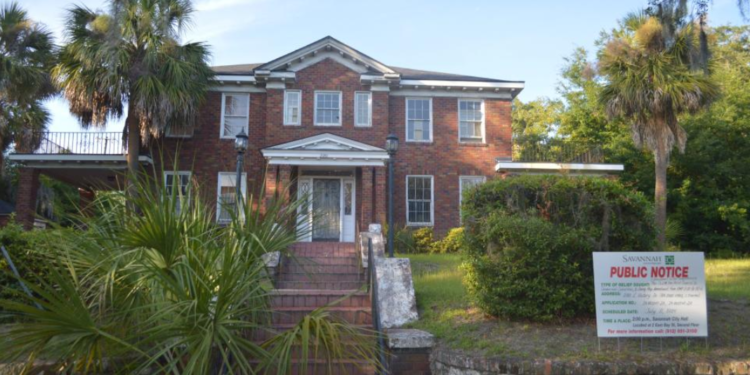March 20, 2025 Story by: Editor
In a city renowned for its historic architecture, it is not uncommon to find properties in need of preservation. This year, two historic sites in Savannah have drawn statewide attention for being at risk.
The Collier-Toomer House and Nicholsonboro Baptist Church have been included on the Georgia Trust for Historic Preservation’s Places in Peril list, an annual initiative aimed at highlighting historically significant properties facing potential loss. Both sites hold deep ties to Savannah’s Black history.
“We need underrepresented African American stories to be told because they are important to Savannah history,” said Ellie Isaacs, Director of Preservation at the Historic Savannah Foundation (HSF). “And they are typically the ones that are not (told).”
The Collier-Toomer House, built in 1938 by local African American dentist and civic leader Nathaniel H. Collier, served as a hub for social and educational gatherings. After the passing of the Colliers, the home was purchased by Janie R. Toomer, Savannah’s first African American female real estate broker.
Located at 2180 E. Victory Drive, the mansion is one of the last remaining grand homes along that stretch. HSF nominated the property for this year’s Places in Peril list due to concerns over potential demolition. A controversial zoning proposal last year aimed to rezone the property for use as a storage facility, which would have led to the house’s destruction.
Additionally, the home lacks individual historic designation or protection under a local historic district. HSF hopes this will change.
“Victory Heights is considered a potential historic district by the MPC, and this would be a contributing property in that district,” Isaacs explained. “I believe that it could actually probably even stand on its own as a national register listing, just for the individual house, so the potential is there.”
While the Collier-Toomer House stands prominently along a main Savannah road, the Nicholsonboro Baptist Church is nestled beneath Spanish moss on Old Coffee Bluff Road. Established in 1850, the church has served as the spiritual home of a community founded by approximately 200 freed slaves in 1868, according to a Georgia Historic Marker.
The original church building was constructed in 1870 by first-generation freedmen, with a second sanctuary added in 1890, described as “an iconic example of early historically Black churches” on the church’s website. The church was listed on the National Register of Historic Places in August 1978.
However, the Places in Peril listing highlights challenges in maintaining the site due to its aging congregation.
“This is a situation where the church is trying to raise awareness of the endangered status of its property, to hopefully raise funds so it can rehabilitate the property,” said Georgia Trust President and CEO Wright Mitchell. He emphasized that being on the list helps bring attention to the preservation needs of historic properties.
Earlier this year, HSF launched its own local endangered places program, with nominations open until the end of March. Isaacs noted that the program’s first list will be unveiled this spring.
Source: Yahoo News

















